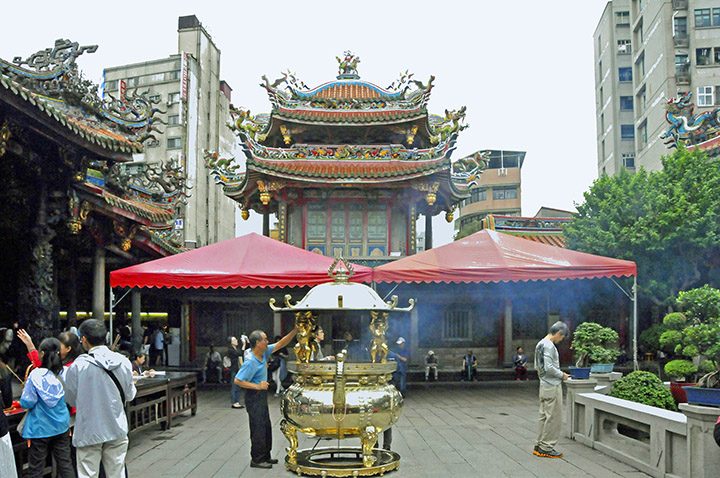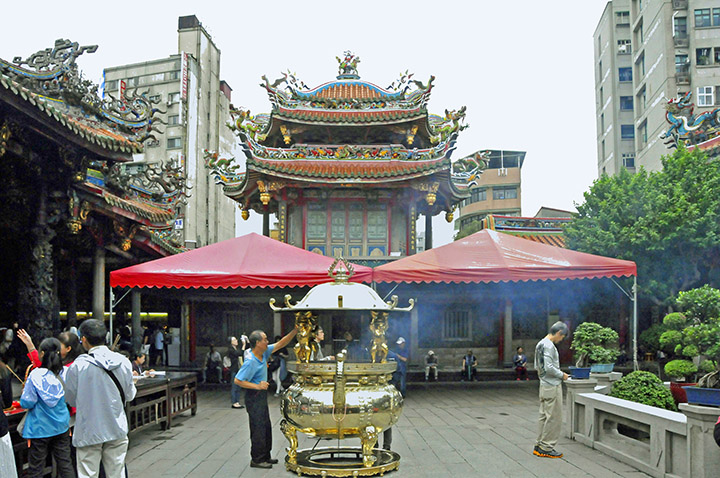
Commentary by Don Knebel
The Longshan Temple in Taipei, Taiwan, is a favorite destination for students seeking help as they face important examinations. The power of the temple is said to be demonstrated by the survival of its most sacred possession.
In 1738, Han immigrants from the mainland built a Buddhist temple in the Manka District of Taipei. They named the temple after one they had left behind and dedicated it to the Bodhisattva of Compassion, known to Chinese Buddhists as Guan-Yin, usually portrayed as female, and to Tibetan Buddhists as Avalokitesvara, usually portrayed as male. As people with different religious beliefs and traditions came to Taipei, images of other gods and goddesses, some from Taoism and some from Chinese folk religions, were added to the temple. Today, the Longshan Temple includes representations of about 100 deities, including Guan-Yu, a Han general many worship as the god of war. A pamphlet handed out at the temple says this spiritual diversity “shows the tolerant mentality of the Chinese people in their religious life.”
The multitude of deities represented in the Longshan Temple means there is one for virtually all of life’s milestones, from sea voyages and crucial tests to marriages and child births. Before any of these events, residents of Taipei go to Longshan Temple, where they pray to the god likely to be of most help. They offer up smoldering incense in golden urns featuring images of “fools holding up the sky.”
Earthquakes and typhoons have repeatedly damaged the Longshan Temple, which was completely rebuilt in 1919. Allied aircraft bombed it during World War II. Despite the devastation of the structures around it, the ornate representation of Bodhisattva Guan-Yin has survived, largely intact. Temple supporters attribute this to the efficacy of Longshan Temple. Students who visit the temple before passing their exams agree.




